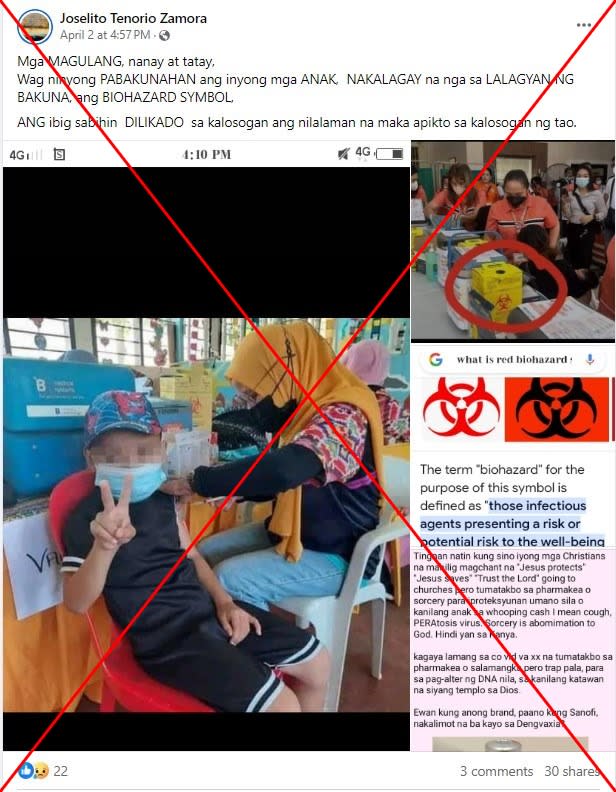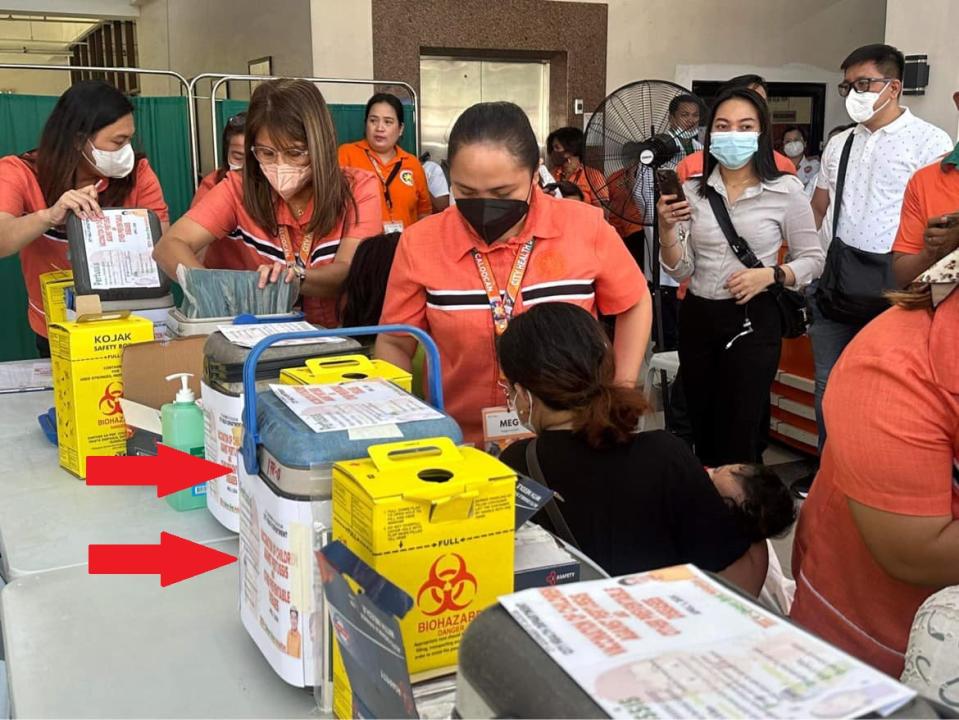Whooping cough vaccines stored in specialised carriers, not 'biohazard' boxes: Philippine medic
Health authorities have stressed that vaccines against whooping cough, also known as pertussis, are safe and effective, contrary to social media posts that falsely claimed the jabs were a "biohazard". The posts, which surfaced in the Philippines amid a surge in reported cases of the disease, misrepresented a photo of safety boxes -- where used syringes and vials are discarded -- from a vaccination drive in the Philippine city of Caloocan.
Whooping cough is a vaccine-preventable disease that spreads through droplets produced by coughing or sneezing. Its symptoms include a mild fever, runny nose and coughing spells lasting four to eight weeks (archived link).
The Philippine Department of Health (DOH) recorded 1,112 cases of pertussis (whooping cough) between January 1 and March 30, 2024, a significant jump from only 32 cases in the same period in 2023. At least 54 deaths were reported as of the end of March this year (archived link).
The Southeast Asian country's health department said an immunisation programme was underway in response to the outbreak.
Following the uptick in locally reported cases, a Tagalog-language Facebook post warned on April 2, 2024, "To all parents, do not vaccinate your kids.
"The biohazard symbol is marked on the box carrying the vaccines. This means its contents are dangerous to health."

One of the photos showed a red circle highlighting a yellow box marked with a "biohazard" symbol; another showed an online definition for "biohazard"; the third showed a child being vaccinated.
The false claim also surfaced in other Facebook posts here, here and here.
As well as the Philippines, whooping cough has been on the rise in Europe and China with global health authorities blaming the Covid pandemic.
The European Centre for Disease Prevention and Control (ECDC) said last month that whooping cough was "an endemic disease worldwide" with peaks every three to five years.
"The current increase is potentially linked to lower circulation during the COVID-19 pandemic, combined with suboptimal vaccination uptake in certain groups during the COVID-19 pandemic," it added.
Safe and effective
Health authorities -- such as the US Centers for Disease Control and Prevention and the Philippines' DOH -- have said vaccines against whooping cough are safe and effective (archived links here and here).
There are at least two types of whooping cough vaccines. These include diphtheria, tetanus and pertussis (DTap) vaccines for babies and children up to seven years old; and tetanus, diphtheria and pertussis (Tdap) vaccines for teenagers and adults.
The CDC said that most side effects of Tdap are mild. Common side effects from DTaP, by contrast, include swelling to vomiting, while "more serious reactions," such as seizures or high fever "happen much less often" (archived link).
Misrepresented safety boxes
A reverse image search on Google found several photos in the false posts were lifted from a Facebook post shared on April 1, 2024 by Filipino Congressman Oscar Malapitan, a lawmaker from Caloocan City in northern Manila (archived link).
Malapitan's post said infants were given pertussis jabs and other vaccines at the Caloocan City North Medical Center.
Karmela Marquez, medical coordinator for the national immunisation programme in Caloocan City, said the whooping cough vaccines were stored in vaccine carriers -- not in yellow boxes carrying the biohazard logo.
The vaccine carriers -- or the blue container in the picture in the false posts -- are typically used by health workers during vaccination campaigns to keep the jabs cold during transportation (archived link).
The yellow boxes with a biohazard logo, meanwhile, contain used syringes and vials, she said.
"I just want to clarify that the box that says 'biohazard' is what we call a safety box," she told AFP on April 16.
"Syringes and vials will be disposed to their respective safety boxes. These boxes are tamper-proof to avoid needle stick injuries."
Below is a screenshot of the original photo, with the vaccine carrier highlighted by AFP:

At its 13-minute three-second mark, this live stream of the event on the official Facebook page of Caloocan City Mayor Dale Gonzalo Malapitan showed a health worker retrieving vials and syringes from the vaccine carrier -- not from the yellow safety box -- before inoculating a child (archived link).
Below are screenshots of the live stream, with corresponding elements highlighted by AFP:

Before being kept in vaccine carriers, Marquez said whooping cough vaccines were stored between two to eight degrees Celsius (35 to 46 degrees Fahrenheit) in pharmaceutical-grade refrigerators (archived link).
Local newspaper Manila Standard and state-run radio station Radyo Pilipinas also published similar photos of the event (archived links here and here).

